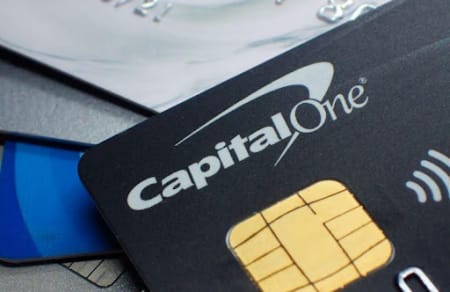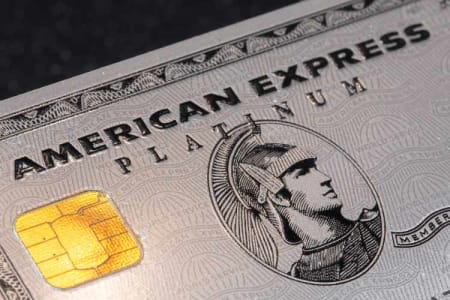Credit Cards Articles & Guides
Learn about how to best utilize your credit card to take back control of your finances and credit score
This site is a free online resource that strives to offer helpful content and comparison features to our visitors. We provide free access to our comparison tools and helpful content through advertising compensation from companies that appear on our site. While this compensation may influence which products we write about and where they appear on the site, it does not affect our reviews or opinions. Our partners cannot pay us to secure favorable reviews or recommendations. Company listings on this page do not imply endorsement. We do not feature all providers on the market. Except as expressly set forth in our Terms of Use, all representations and warranties regarding the information presented on this page are disclaimed. The information, including pricing, which appears on this site is subject to change at any time.

A Guide to Getting Airport Lounge Access With a Credit Card
Airport lounge access credit cards provide travelers with exclusive perks like complimentary food, drinks, and a quieter space to relax before flights. To choose the best card, consider lounge availability, fees, and travel habits. Read the full article for expert recommendations on maximizing your airport lounge access benefits.

Travel Insurance Through Credit Cards: What You Need to Know
Credit card travel insurance offers financial protection against trip cancellations, delays, lost baggage, rental car damage, and travel accidents when you pay for your trip with an eligible card. Read the full article to learn more about the best travel credit cards and how their insurance benefits can protect your next trip.

A Guide to Capital One Miles
Capital One Miles are a flexible rewards currency earned through Capital One travel credit cards, redeemable for travel, gift cards, online shopping, and even cash back. Maximizing their value involves using travel transfer partners, earning bonuses through strategic spending, and pairing a Capital One Miles card with a high-earning cash-back card.

How to Read Your Credit Card Statement
A credit card statement provides a detailed summary of your spending, payments, fees, interest charges, and rewards during a billing cycle, helping you track your finances and detect potential errors. To learn how to read your statement effectively and avoid costly mistakes, read the full article for expert insights.

Understanding Credit Card Rewards: Points, Miles, and Cash Back Explained
Credit card rewards typically fall into four main categories: airline miles, hotel points, flexible travel rewards, and cash back, each with different redemption options and value. To maximize rewards, consider your spending habits, compare transfer options, and look for discounted award programs. Read the full article to explore expert tips on getting the best value from your credit card rewards.

Maximizing Cash Back: Strategies for Using Multiple Cards
Using multiple cash back credit cards strategically can help maximize rewards by leveraging different earning rates across various spending categories. However, managing multiple cards requires organization to avoid missed payments, overlapping benefits, and potential debt accumulation.

Credit Card Rewards: A Guide
Rare are the days that you whip out cash to pay for everything. Most of us use debit or credit cards to pay for everything from weekly grocery shopping to funding our dream vacation. What if you got a small kickback for every purchase you made though? That’s where reward credit cards come into play and can give you more perks for everyday spending.

How to Get Approved for a Credit Card
Applying for a credit card is a bit like applying for a job. You don’t want to just go for the first card you find without making sure that it’s a good fit. Add on top of that the possibility of not getting approved, and it’s no wonder that some people find applying for credit cards stressful. While it’s not the end of the world if your application is denied, it isn’t the most pleasant feeling.

What is a Credit Builder Credit Card?
Which came first, the chicken or the egg? The logic behind this age-old causality dilemma also applies to the following question: how do you build credit if you have no credit? After all, if you have no credit or bad credit then it’s almost impossible to qualify for a conventional credit card or loan.

Credit Cards vs. Debit Cards: Which is Right for You?
Your wallet may contain credit cards and debit cards. Both card types look and behave in similar ways. They have 16-digit account numbers, expiration dates, security codes, security chips, magnetic stripes, and you can use them to make payments.

What Is a Balance Transfer Credit Card?
Credit card debt can feel overwhelming when most of your monthly payment goes toward interest charges.

Credit Card Tips: 10 Ways to Stay on Track for This Year's Money Goals
Credit cards can do more than just facilitate payments—they can be powerful tools for achieving your financial goals, from building credit to saving for a house.

Balance Transfer Fees Explained: Are They Worth It?
A balance transfer card can save you interest by moving debt to a 0% intro APR card, but fees (3%–5%) add costs. To decide if it’s worth it, compare savings to fees and have a repayment plan. Choosing a low-fee card, negotiating, or transferring less can help. Avoid new debt to make it effective. Read the full article for tips on maximizing savings and avoiding pitfalls.

Understanding Cash Back Categories: How to Optimize Your Spending
Cash back credit cards allow you to earn rewards on purchases, typically through flat-rate or bonus categories like dining, groceries, and gas. Maximizing rewards depends on understanding your spending habits and choosing the right card. Consider sign-up bonuses, caps, and redemption options to boost earnings. For more insights, read the full article below.

How to Do a Balance Transfer
A balance transfer moves debt from a high-interest card to one with a 0% intro APR, helping you save on interest. To do it, choose a card, check fees, apply, and transfer the balance while creating a repayment plan to avoid interest after the promo period. Avoid new debt on old cards and ensure savings outweigh fees. Read the full article for a step-by-step guide and best practices.

How to Get the Most Out of Your Credit Card Rewards in 2025
Credit card rewards can unlock excellent benefits, from free flights to cash back, all with minimal effort on your part.

Why Was My Credit Card Application Declined?
Credit cards are powerful tools for building credit, managing expenses, and earning rewards.

A Guide to American Express Membership Rewards
American Express Membership Rewards lets cardholders earn points for travel, statement credits, gift cards, and more. Maximize rewards with spending multipliers, welcome bonuses, and Amex Offers, or transfer points to travel partners for added value. Choose a card that fits your spending and take advantage of promotions. Want to optimize your rewards? Read the full article for expert tips.

Building Credit Responsibly: Best Practices for Credit Card Use
Using a credit card responsibly can help build credit, especially for those with limited history. Start with a secured card if needed, keep credit utilization under 30%, and never miss payments. Setting up autopay, avoiding debt, and becoming an authorized user can also boost your score. Credit improvement typically takes 6+ months. Read the full article for expert strategies on building credit.

The Ultimate Travel Credit Card Guide
Travel can be expensive. With the cost of flights, hotel rooms, travel insurance, and more, if you’re traveling regularly for leisure, work, or family reasons, it can quickly add up. But what if you could reduce your travel costs every time you used your credit card?
